Sauermann TH 300 Bedienungsanleitung
Lies die bedienungsanleitung für Sauermann TH 300 (1 Seiten) kostenlos online; sie gehört zur Kategorie Messung. Dieses Handbuch wurde von 2 Personen als hilfreich bewertet und erhielt im Schnitt 4.6 Sterne aus 1.5 Bewertungen. Hast du eine Frage zu Sauermann TH 300 oder möchtest du andere Nutzer dieses Produkts befragen? Stelle eine Frage
Seite 1/1

TH 300
Thermometer with thermistance
USER MANUAL
Measuring range Resolution
From -50 to +150°C
0.1°C from -20°C to +150°C
1°C from -20°C to -50°C
Accuracy
±1°C maximum from -20°C to +100°C
±2°C on remaining scale
Technical
specificationsDescription
• Display: 41 x 15 mm
• Stainless steel probe: 105 mm
length, cable 800 mm
• Ambient temperature for
housing: from -10 °C to +40 °C
• Battery: 1.5 V AAA type, LR03 or
equal. Battery life: about 1 year.
• Dimensions: 100 x 64 x 21 mm
• Weight: 87 g
Use
1. Open the battery compartment and
put out the cable probe.
2. Take out the protective cap and insert
the probe for at least 1 cm in the
substance to test.
3. Put the switch on ON/OFF ‘‘ON’’.
4. Put the selector on to T/H ‘‘T’’
program a continuous display or on
‘‘H’’ to hold the displayed value.
In that case, °C ashes: slide on ‘‘T’’
to hold measurement.
Temperature alarm
configuration
1. Press the button MAX. ALARM
during about 3 seconds: -50°C is
displayed then the screen scrolls.
2. Release the button to stop scrolling.
Select the chosen accurate value, as
each pressure increases the display
of 1°C.
3. About 5 seconds later, the screen
displays once again the measured
temperature.
4. When the measured value reaches
the selected value, the alarm sounds
4 beeps.
5. To stop the alarm, press any button.
6. Follow the same procedure to select
the minimum alarm temperature.
The T/H display mode change cancels the alarm congurations.
If the device is not used for a long time, please remove the batteries.
NTang – TH300 – 04/10/24 – Non-contractual document – We reserve the right to modify the characteristics of our products without prior notice.
Throwing a used battery in the
environment or with household waste
pollutes and avoids the valuable materials
recovering. It is therefore important to limit
the batteries consumption and observe the
following instructions:
- prefer alkaline batteries (they last longer
than saline batteries) and when it is
possible, use rechargeable batteries
- place the used batteries and accumulators
in the dedicated containers available
in local shops. Therefore, metals will be
enhanced and will not pollute environment,
because they contain heavy metals that
are dangerous for health and environment
(mainly cadmium and nickel)
When placing batteries, carefully respect
the polarity indicated on the device and
the battery.
An incorrect positionning can damage the
device or cause leakages on the batteries,
or in extreme cases create a re hazard or
the battery explosion.
To ensure a correct operating, the batteries
must be in a good working order. If
an anomaly is detected in the device
functioning, insert new batteries.
Never try to load batteries that are not
rechargeable batteries. They can leak, heat
up, cause a re hazard or an explosion.
Replace all the batteries at the same time.
Never mix saline batteries with alkaline or
rechargeable batteries.
The used batteries must be removed from
the device.
Also, remove the batteries from your device
if it is not used for a long period. Otherwise
the batteries may leak and cause damages.
Never try to short-circuit the terminals
of a battery.
Never dispose of your batteries in re, they
may explode.
The accumulators recharging must be
carried out by an adult person.
Remove the accumulators from the device
before charging them.
We recommend the adult to watch out
carefuly the kids during the batteries
replacement in order to ensure the
instructions are observed, or to carry out
the batteries replacement in person.
If a battery is swallawed, immediatly
consult your doctor or the nearest poison
control centre. Do not forget to bring
the device.
Precisions & precautions for batteries use
Sauermann Industrie
ZA Bernard Moulinet - 24700 Montpon-Ménestérol - France
+33 (0)5 53 80 85 00 services@sauermanngroup.com
sauermanngroup.com
TH 300
Thermometer with thermistance
USER MANUAL
Measuring range Resolution
From -50 to +150°C
0.1°C from -20°C to +150°C
1°C from -20°C to -50°C
Accuracy
±1°C maximum from -20°C to +100°C
±2°C on remaining scale
Technical
specificationsDescription
• Display: 41 x 15 mm
• Stainless steel probe: 105 mm
length, cable 800 mm
• Ambient temperature for
housing: from -10 °C to +40 °C
• Battery: 1.5 V AAA type, LR03 or
equal. Battery life: about 1 year.
• Dimensions: 100 x 64 x 21 mm
• Weight: 87 g
Use
1. Open the battery compartment and
put out the cable probe.
2. Take out the protective cap and insert
the probe for at least 1 cm in the
substance to test.
3. Put the switch on ON/OFF ‘‘ON’’.
4. Put the selector on to T/H ‘‘T’’
program a continuous display or on
‘‘H’’ to hold the displayed value.
In that case, °C ashes: slide on ‘‘T’’
to hold measurement.
Temperature alarm
configuration
1. Press the button MAX. ALARM
during about 3 seconds: -50°C is
displayed then the screen scrolls.
2. Release the button to stop scrolling.
Select the chosen accurate value, as
each pressure increases the display
of 1°C.
3. About 5 seconds later, the screen
displays once again the measured
temperature.
4. When the measured value reaches
the selected value, the alarm sounds
4 beeps.
5. To stop the alarm, press any button.
6. Follow the same procedure to select
the minimum alarm temperature.
The T/H display mode change cancels the alarm congurations.
If the device is not used for a long time, please remove the batteries.
NTang – TH300 – 04/10/24 – Non-contractual document – We reserve the right to modify the characteristics of our products without prior notice.
Throwing a used battery in the
environment or with household waste
pollutes and avoids the valuable materials
recovering. It is therefore important to limit
the batteries consumption and observe the
following instructions:
- prefer alkaline batteries (they last longer
than saline batteries) and when it is
possible, use rechargeable batteries
- place the used batteries and accumulators
in the dedicated containers available
in local shops. Therefore, metals will be
enhanced and will not pollute environment,
because they contain heavy metals that
are dangerous for health and environment
(mainly cadmium and nickel)
When placing batteries, carefully respect
the polarity indicated on the device and
the battery.
An incorrect positionning can damage the
device or cause leakages on the batteries,
or in extreme cases create a re hazard or
the battery explosion.
To ensure a correct operating, the batteries
must be in a good working order. If
an anomaly is detected in the device
functioning, insert new batteries.
Never try to load batteries that are not
rechargeable batteries. They can leak, heat
up, cause a re hazard or an explosion.
Replace all the batteries at the same time.
Never mix saline batteries with alkaline or
rechargeable batteries.
The used batteries must be removed from
the device.
Also, remove the batteries from your device
if it is not used for a long period. Otherwise
the batteries may leak and cause damages.
Never try to short-circuit the terminals
of a battery.
Never dispose of your batteries in re, they
may explode.
The accumulators recharging must be
carried out by an adult person.
Remove the accumulators from the device
before charging them.
We recommend the adult to watch out
carefuly the kids during the batteries
replacement in order to ensure the
instructions are observed, or to carry out
the batteries replacement in person.
If a battery is swallawed, immediatly
consult your doctor or the nearest poison
control centre. Do not forget to bring
the device.
Precisions & precautions for batteries use
Sauermann Industrie
ZA Bernard Moulinet - 24700 Montpon-Ménestérol - France
+33 (0)5 53 80 85 00 services@sauermanngroup.com
sauermanngroup.com
TH 300
Thermometer with thermistance
USER MANUAL
Measuring range Resolution
From -50 to +150°C
0.1°C from -20°C to +150°C
1°C from -20°C to -50°C
Accuracy
±1°C maximum from -20°C to +100°C
±2°C on remaining scale
Technical
specificationsDescription
• Display: 41 x 15 mm
• Stainless steel probe: 105 mm
length, cable 800 mm
• Ambient temperature for
housing: from -10 °C to +40 °C
• Battery: 1.5 V AAA type, LR03 or
equal. Battery life: about 1 year.
• Dimensions: 100 x 64 x 21 mm
• Weight: 87 g
Use
1. Open the battery compartment and
put out the cable probe.
2. Take out the protective cap and insert
the probe for at least 1 cm in the
substance to test.
3. Put the switch on ON/OFF ‘‘ON’’.
4. Put the selector on to T/H ‘‘T’’
program a continuous display or on
‘‘H’’ to hold the displayed value.
In that case, °C ashes: slide on ‘‘T’’
to hold measurement.
Temperature alarm
configuration
1. Press the button MAX. ALARM
during about 3 seconds: -50°C is
displayed then the screen scrolls.
2. Release the button to stop scrolling.
Select the chosen accurate value, as
each pressure increases the display
of 1°C.
3. About 5 seconds later, the screen
displays once again the measured
temperature.
4. When the measured value reaches
the selected value, the alarm sounds
4 beeps.
5. To stop the alarm, press any button.
6. Follow the same procedure to select
the minimum alarm temperature.
The T/H display mode change cancels the alarm congurations.
If the device is not used for a long time, please remove the batteries.
NTang – TH300 – 04/10/24 – Non-contractual document – We reserve the right to modify the characteristics of our products without prior notice.
Throwing a used battery in the
environment or with household waste
pollutes and avoids the valuable materials
recovering. It is therefore important to limit
the batteries consumption and observe the
following instructions:
- prefer alkaline batteries (they last longer
than saline batteries) and when it is
possible, use rechargeable batteries
- place the used batteries and accumulators
in the dedicated containers available
in local shops. Therefore, metals will be
enhanced and will not pollute environment,
because they contain heavy metals that
are dangerous for health and environment
(mainly cadmium and nickel)
When placing batteries, carefully respect
the polarity indicated on the device and
the battery.
An incorrect positionning can damage the
device or cause leakages on the batteries,
or in extreme cases create a re hazard or
the battery explosion.
To ensure a correct operating, the batteries
must be in a good working order. If
an anomaly is detected in the device
functioning, insert new batteries.
Never try to load batteries that are not
rechargeable batteries. They can leak, heat
up, cause a re hazard or an explosion.
Replace all the batteries at the same time.
Never mix saline batteries with alkaline or
rechargeable batteries.
The used batteries must be removed from
the device.
Also, remove the batteries from your device
if it is not used for a long period. Otherwise
the batteries may leak and cause damages.
Never try to short-circuit the terminals
of a battery.
Never dispose of your batteries in re, they
may explode.
The accumulators recharging must be
carried out by an adult person.
Remove the accumulators from the device
before charging them.
We recommend the adult to watch out
carefuly the kids during the batteries
replacement in order to ensure the
instructions are observed, or to carry out
the batteries replacement in person.
If a battery is swallawed, immediatly
consult your doctor or the nearest poison
control centre. Do not forget to bring
the device.
Precisions & precautions for batteries use
Sauermann Industrie
ZA Bernard Moulinet - 24700 Montpon-Ménestérol - France
+33 (0)5 53 80 85 00 services@sauermanngroup.com
sauermanngroup.com
TH 300
Thermometer with thermistance
USER MANUAL
Measuring range Resolution
From -50 to +150°C
0.1°C from -20°C to +150°C
1°C from -20°C to -50°C
Accuracy
±1°C maximum from -20°C to +100°C
±2°C on remaining scale
Technical
specificationsDescription
• Display: 41 x 15 mm
• Stainless steel probe: 105 mm
length, cable 800 mm
• Ambient temperature for
housing: from -10 °C to +40 °C
• Battery: 1.5 V AAA type, LR03 or
equal. Battery life: about 1 year.
• Dimensions: 100 x 64 x 21 mm
• Weight: 87 g
Use
1. Open the battery compartment and
put out the cable probe.
2. Take out the protective cap and insert
the probe for at least 1 cm in the
substance to test.
3. Put the switch on ON/OFF ‘‘ON’’.
4. Put the selector on to T/H ‘‘T’’
program a continuous display or on
‘‘H’’ to hold the displayed value.
In that case, °C ashes: slide on ‘‘T’’
to hold measurement.
Temperature alarm
configuration
1. Press the button MAX. ALARM
during about 3 seconds: -50°C is
displayed then the screen scrolls.
2. Release the button to stop scrolling.
Select the chosen accurate value, as
each pressure increases the display
of 1°C.
3. About 5 seconds later, the screen
displays once again the measured
temperature.
4. When the measured value reaches
the selected value, the alarm sounds
4 beeps.
5. To stop the alarm, press any button.
6. Follow the same procedure to select
the minimum alarm temperature.
The T/H display mode change cancels the alarm congurations.
If the device is not used for a long time, please remove the batteries.
NTang – TH300 – 04/10/24 – Non-contractual document – We reserve the right to modify the characteristics of our products without prior notice.
Throwing a used battery in the
environment or with household waste
pollutes and avoids the valuable materials
recovering. It is therefore important to limit
the batteries consumption and observe the
following instructions:
- prefer alkaline batteries (they last longer
than saline batteries) and when it is
possible, use rechargeable batteries
- place the used batteries and accumulators
in the dedicated containers available
in local shops. Therefore, metals will be
enhanced and will not pollute environment,
because they contain heavy metals that
are dangerous for health and environment
(mainly cadmium and nickel)
When placing batteries, carefully respect
the polarity indicated on the device and
the battery.
An incorrect positionning can damage the
device or cause leakages on the batteries,
or in extreme cases create a re hazard or
the battery explosion.
To ensure a correct operating, the batteries
must be in a good working order. If
an anomaly is detected in the device
functioning, insert new batteries.
Never try to load batteries that are not
rechargeable batteries. They can leak, heat
up, cause a re hazard or an explosion.
Replace all the batteries at the same time.
Never mix saline batteries with alkaline or
rechargeable batteries.
The used batteries must be removed from
the device.
Also, remove the batteries from your device
if it is not used for a long period. Otherwise
the batteries may leak and cause damages.
Never try to short-circuit the terminals
of a battery.
Never dispose of your batteries in re, they
may explode.
The accumulators recharging must be
carried out by an adult person.
Remove the accumulators from the device
before charging them.
We recommend the adult to watch out
carefuly the kids during the batteries
replacement in order to ensure the
instructions are observed, or to carry out
the batteries replacement in person.
If a battery is swallawed, immediatly
consult your doctor or the nearest poison
control centre. Do not forget to bring
the device.
Precisions & precautions for batteries use
Sauermann Industrie
ZA Bernard Moulinet - 24700 Montpon-Ménestérol - France
+33 (0)5 53 80 85 00 services@sauermanngroup.com
sauermanngroup.com
Produktspezifikationen
| Marke: | Sauermann |
| Kategorie: | Messung |
| Modell: | TH 300 |
Brauchst du Hilfe?
Wenn Sie Hilfe mit Sauermann TH 300 benötigen, stellen Sie unten eine Frage und andere Benutzer werden Ihnen antworten
Bedienungsanleitung Messung Sauermann

14 August 2025
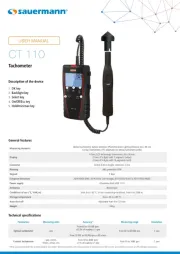
14 August 2025
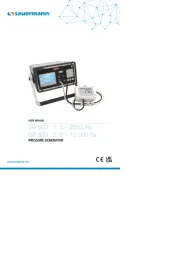
14 August 2025
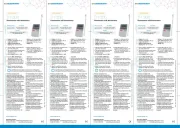
14 August 2025
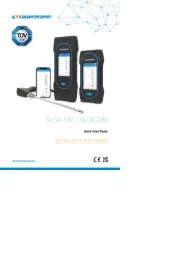
14 August 2025
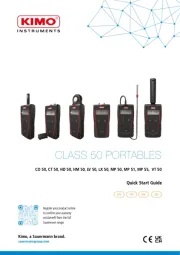
14 August 2025
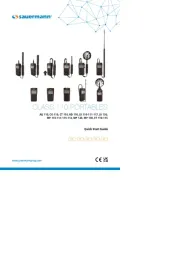
14 August 2025
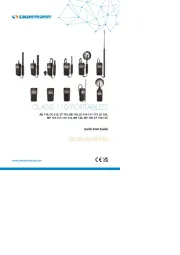
14 August 2025
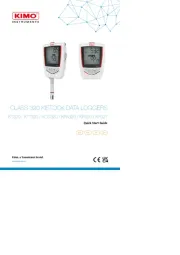
14 August 2025
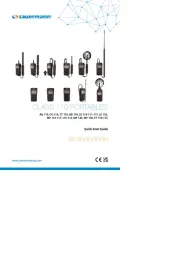
14 August 2025
Bedienungsanleitung Messung
- Rothenberger
- Amprobe
- Black And Decker
- Vemer
- Smartwares
- Kogan
- Sauter
- Rigel Medical
- Einhell
- Jumo
- Kreg
- Kübler
- SRS
- Fluke
- Brandson
Neueste Bedienungsanleitung für -Kategorien-
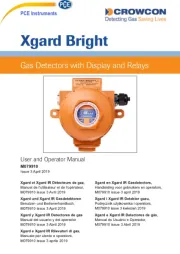
14 August 2025
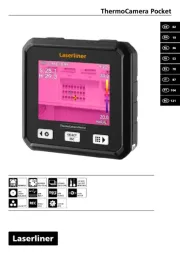
14 August 2025
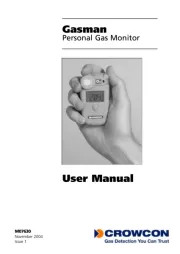
13 August 2025
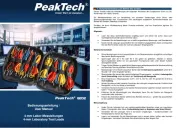
13 August 2025
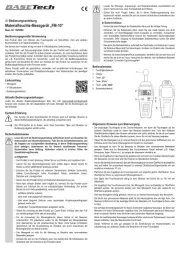
12 August 2025
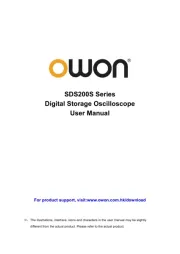
12 August 2025
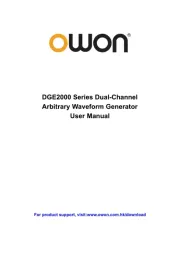
12 August 2025
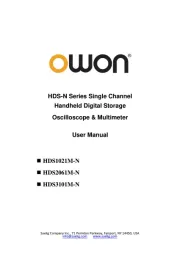
11 August 2025
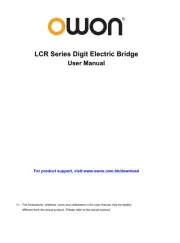
11 August 2025
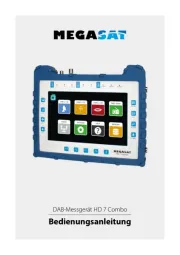
11 August 2025